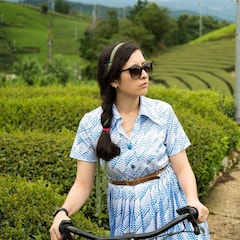Tokyo R&R with Mitsui Garden Hotel Jingu-Gaien
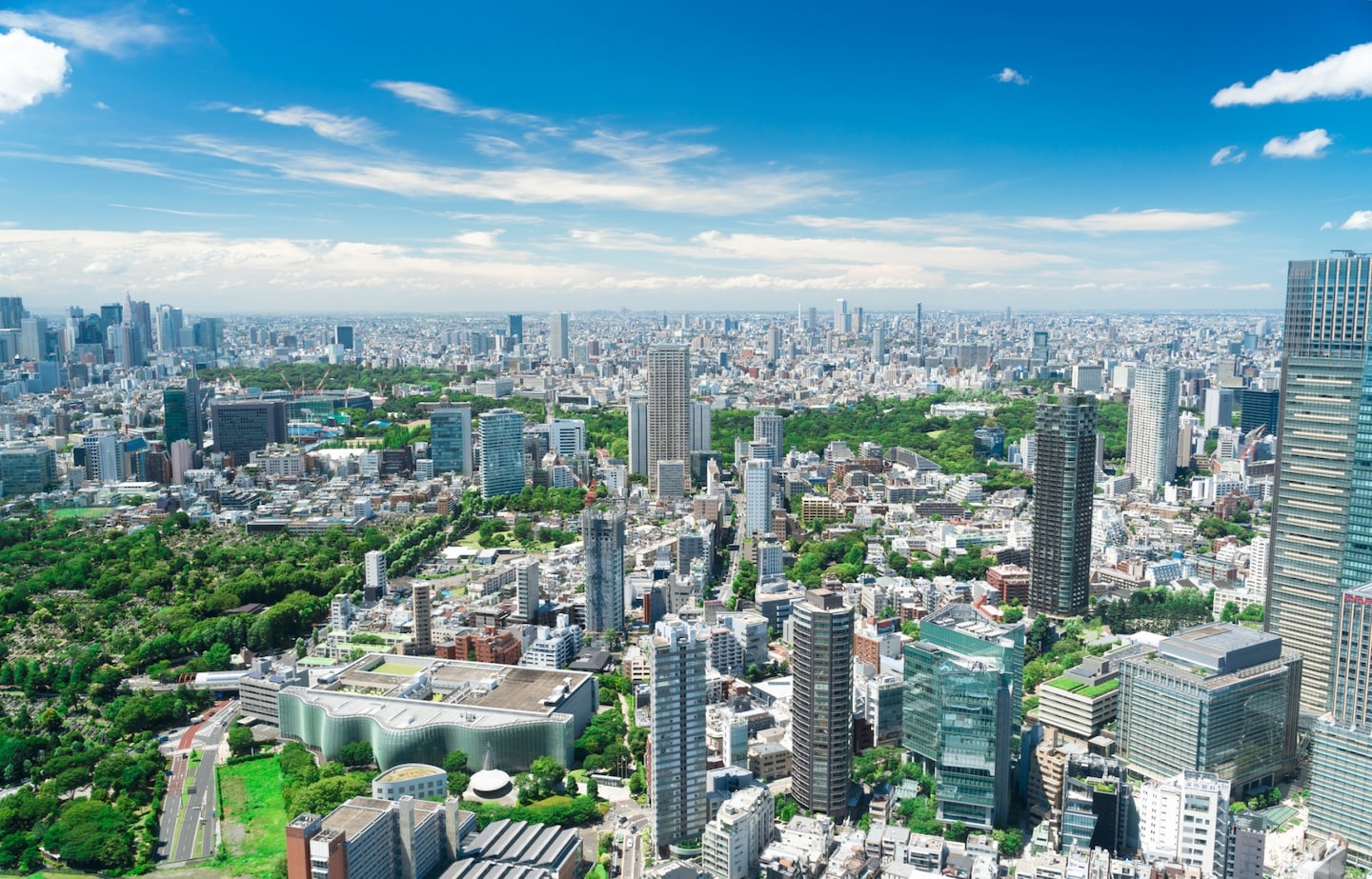
Tokyo has a reputation for being frenetic, and while that’s true, there are plenty of places to relax, appreciate art, and find pockets of beauty, starting with the Mitsui Garden Hotel Jingu-Gaien Tokyo Premier. Located in a prime spot in the heart of the city, it is the perfect place from which to explore the nearby neighborhoods.
By Selena HoyWhile much of the hotel's design is understated, there are elegant little touches and art pieces scattered around the property, most following the themes of water, air, and wood. These themes are complemented by the greenery surrounding the hotel, which is rare in central Tokyo, and the hotel itself is constructed of Japanese cedar.
More on the hotel in a bit. For now, there is exploring to do!
Day One
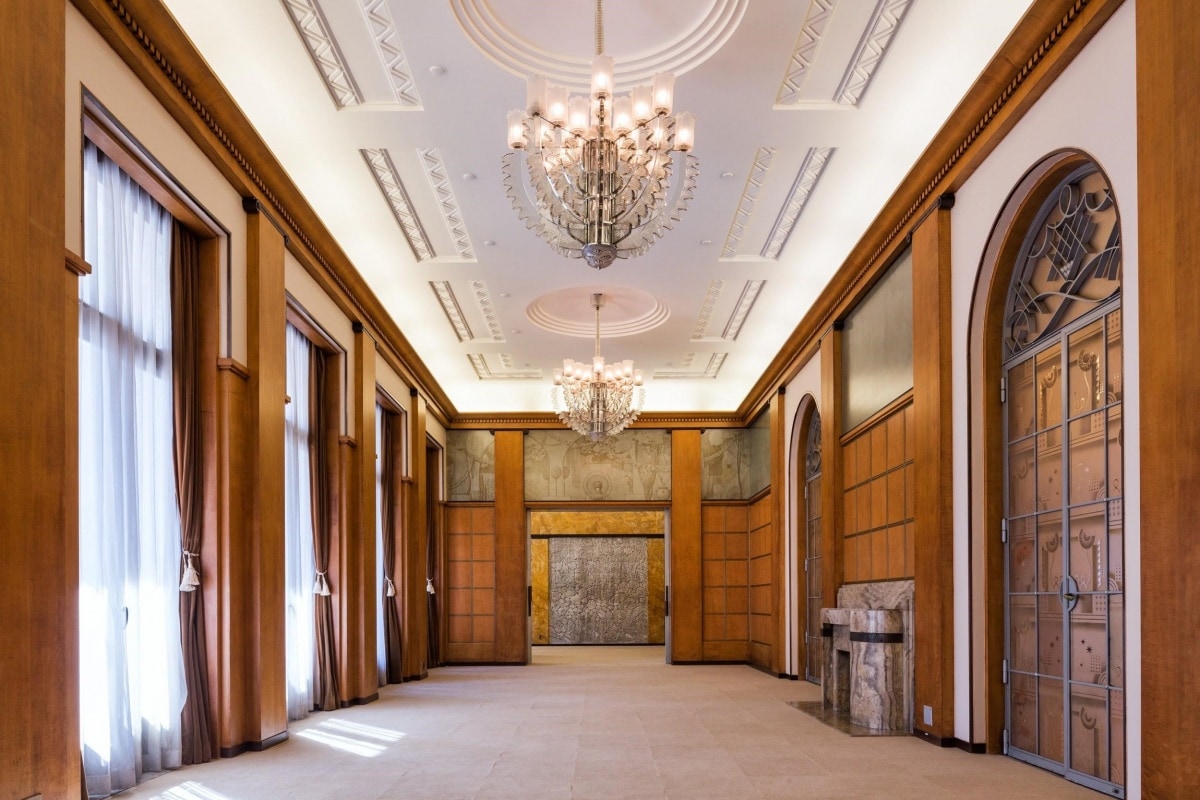
The day’s exploration starts in Meguro, at the Tokyo Metropolitan Teien Art Museum. The museum is the former residence of Prince Asaka, who lived here with his wife, Princess Nobuko. The Prince and Princess had lived in Paris in the 1920s, and loved art deco. That love is reflected throughout the building, which features Lalique glass, ornate original ironwork on each radiator cover and fireplace grate, and unique light fixtures in each room. The museum hosts rotating exhibitions that consider orientalism and exoticism, but the house itself is a work of art worthy of inspection, no matter the exhibition. The European styles are married with Japanese tastes and scale, especially in the family’s private quarters. The manicured strolling grounds have both a Japanese and European style garden, with a small teahouse in the Japanese section.
After visiting the museum, walk along the Meguro River to the west. In the spring, the canal is draped with cherry blossoms, and you’ll find numerous small riverside cafes and shops.
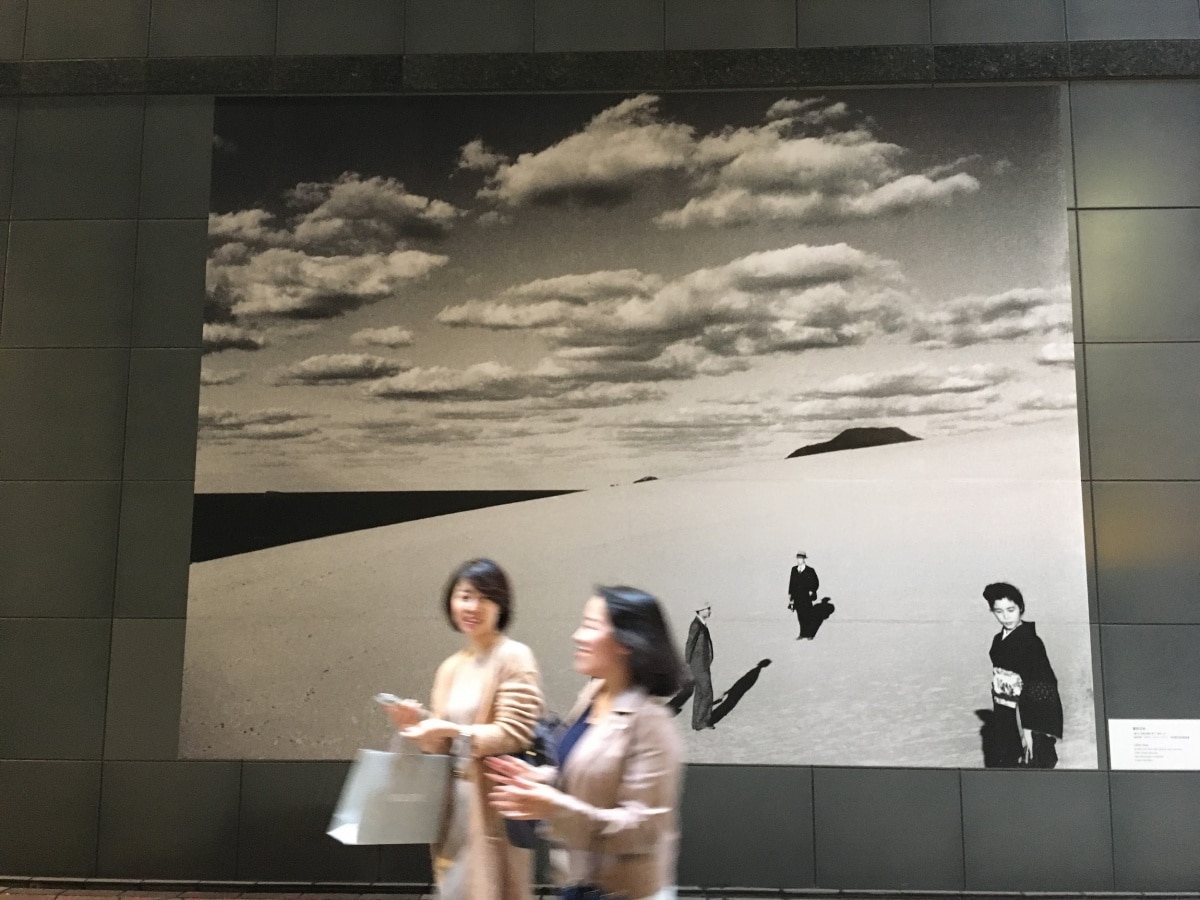
Next, take the train one stop to Ebisu, where you’ll find the Tokyo Photographic Museum of Art centrally located in the swish Ebisu Garden Place. The museum showcases the work of both Japanese and international photographers, including contemporary and historical work. The museum, in addition to exhibiting beautiful and interesting photographs, also present exhibitions that address more existential questions about photography, such as the role of photography in memory, or the role of the war photographer. The TOP Museum is an excellent place to see portraits of Japanese life. Rendered in slabs of cool white marble accented with green, it’s a place of calm and contemplation.
The site of the museum, Yebisu Garden Place, is a former beer brewery, but today hosts a mix of shops, restaurants, and a small beer museum, and is good for a snack and a stroll.
Day Two

21_21 DESIGN SIGHT is deceptive. From the outside, the low-slung building looks small, especially in comparison to the gleaming skyscrapers around. Step inside, though, and a vast underground space is revealed, all of it dedicated to everyday design. Designed by architect Tadao Ando, the concrete space plays with angles and light to provide unexpected views. The planning of the institution is done by three directors: designer Issey Miyake, graphic designer Taku Satoh and product designer Naoto Fukasawa. Exhibitions vary but always focus on examining everyday things from a design perspective.
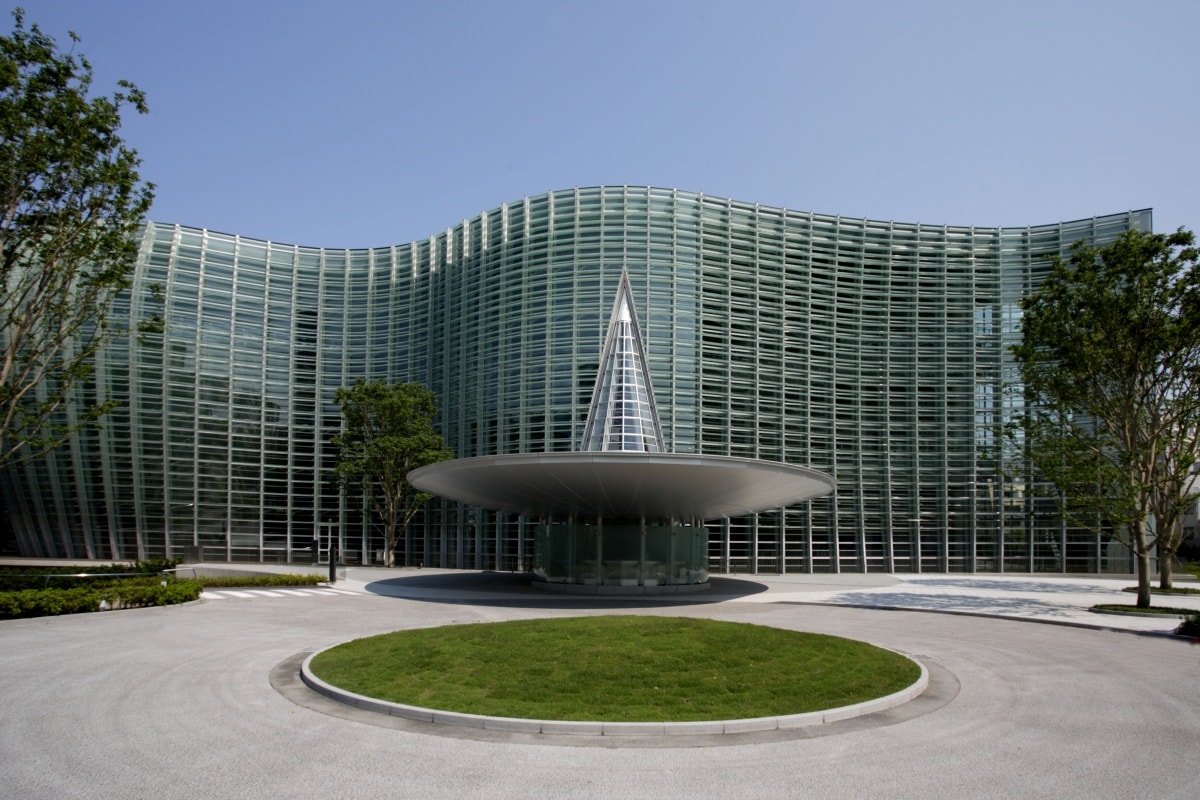
A few hundred meters west is the National Art Center, Tokyo, another place to consider glass, steel, and geometry. The NACT has a number of galleries, with a combination of free and paid exhibitions; but even to walk around the building and have a cup of coffee under the soaring lines designed by architect Kisho Kurokawa is to revel in light and beauty.
Photo courtesy of The National Art Center, Tokyo.
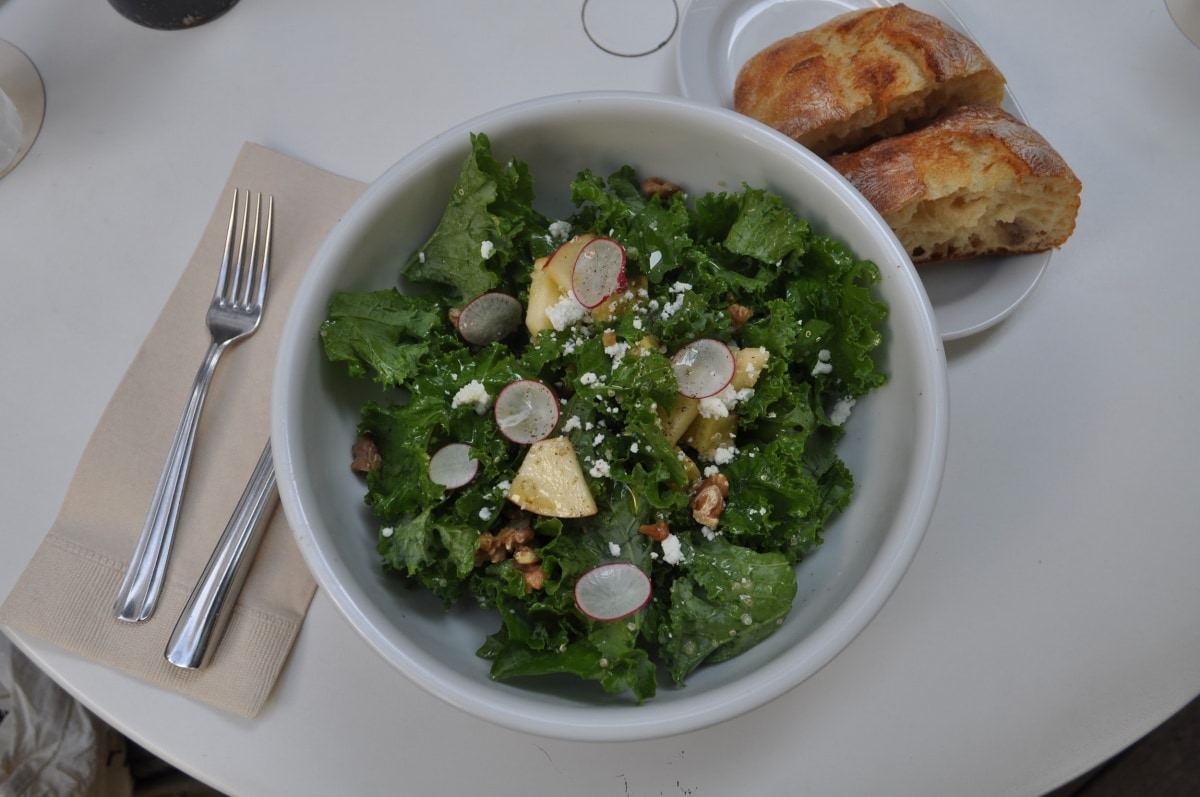
One stop away in Omotesando, crisscross serves up fresh and healthy fare with a helping of beautiful breads from the adjacent Breadworks bakery. The terrace, with its open-air coffee bar, is filled with trees strung with fairy lights and populated with the fashionable and well-heeled denizens of the area. Try the kale and apple salad with a cafe au lait and a pistachio croissant chaser, then spend the afternoon strolling the swanky streets of Omotesando. Fashion giants like Prada and Yohji Yamamoto have flagship stores standing alongside smaller brands like Sacai and Maison Kitsune.
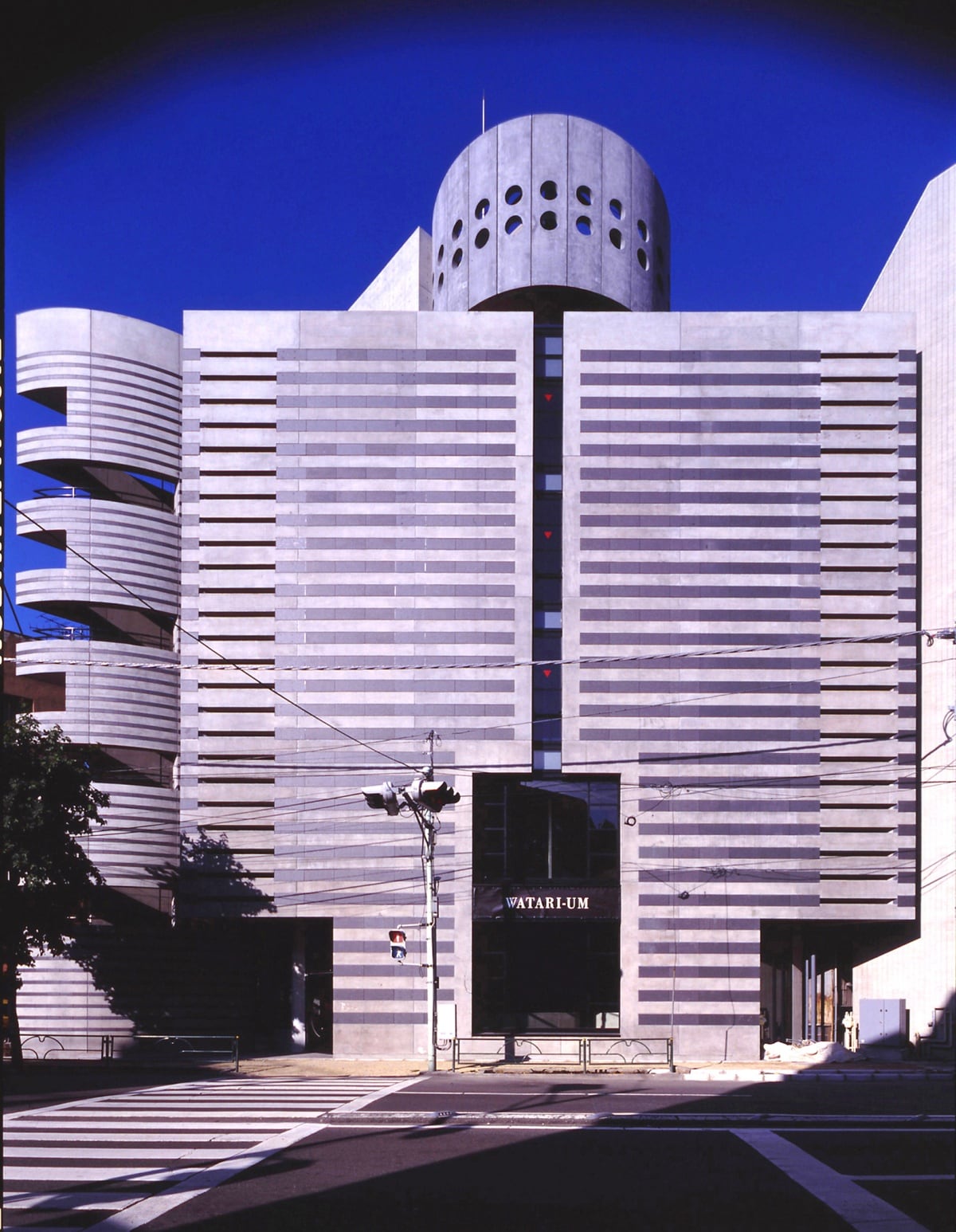
The Watari Museum of Contemporary Art (also known as WATARI-UM) in Shibuya is a haven for contemporary art, showing some of the biggest and most up-and-coming contemporary artists in Asia and beyond. Spanning four stories plus a basement cafe and shop in a busy city block, you’ll find mixed media, sculpture, video, and more, with plenty of thought-provoking conceptual pieces. Past exhibitors include Barry McGee, Tadanobu Asano, and Ryuichi Sakamoto.
The tour of some of Japan’s most prominent architects is completed with a return to the hotel, which is directly adjacent to the new Olympic stadium!
The New National Stadium was designed by Japanese architectural giant Kengo Kuma, and when we say that the hotel is directly adjacent to it, we mean directly adjacent. The unique curvature of the hotel's outer walls is said to have been designed to complement the curvature of the stadium, as if they could fit together like puzzle pieces.
Day Three
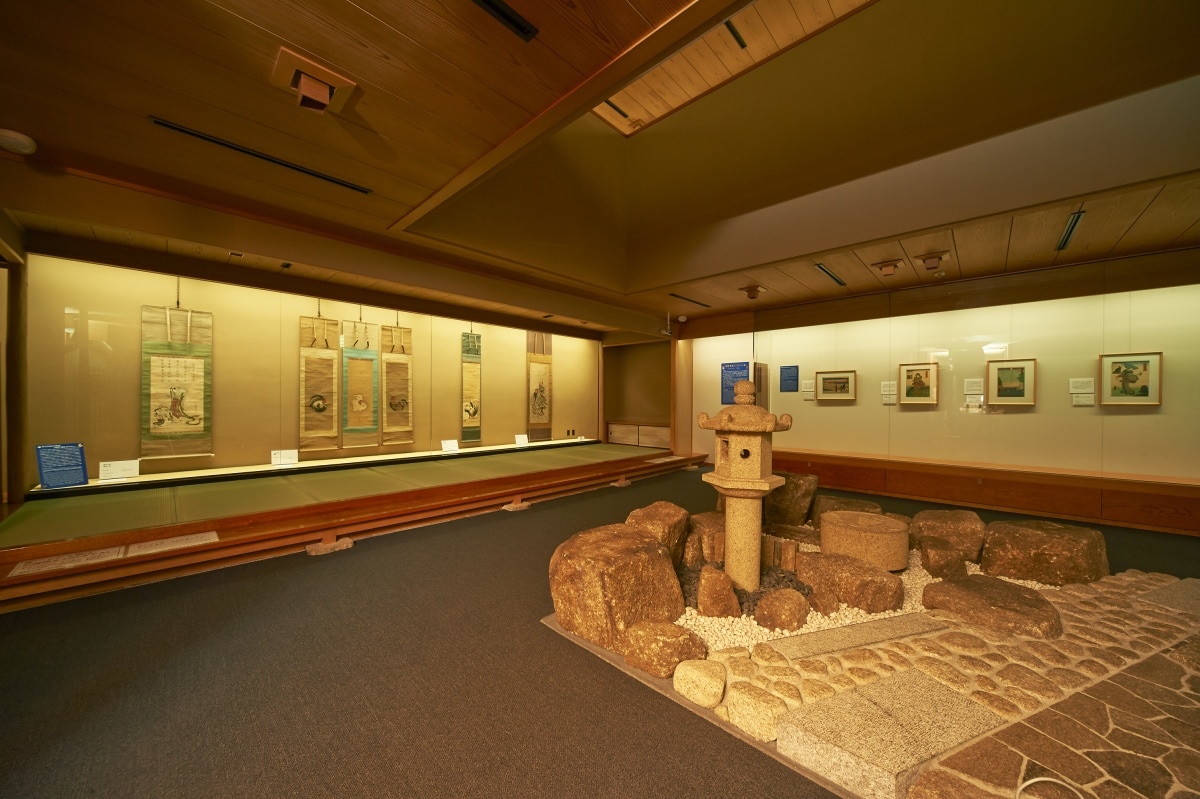
In Harajuku at the Omotesando exit and the entrance to Meiji Shrine, people are dancing, busking, and offering free hugs. A few blocks away, the entrance to the Ota Memorial Museum of Art is unobtrusive. In stark contrast to the frantic bubblegum parade outside, the Ota exhibits ukiyo-e, the exquisite Japanese woodblock prints. The museum is quiet, with classical touches: it’s necessary to view some pieces in sock feet, on tatami mats; a small zen-style garden decorates the center of the first floor hall. The detailed scenes are rendered in brilliant color, each layer having been intricately carved by hand into wooden slabs before being coated with ink and pressed onto paper. Fierce battle scenes; brilliant scenery; and portraits of beautiful women and kabuki actors are all on display here. Don’t miss the gift shop, which is a textile-lovers’ dream, featuring hundreds of tenugui towels printed in different patterns.
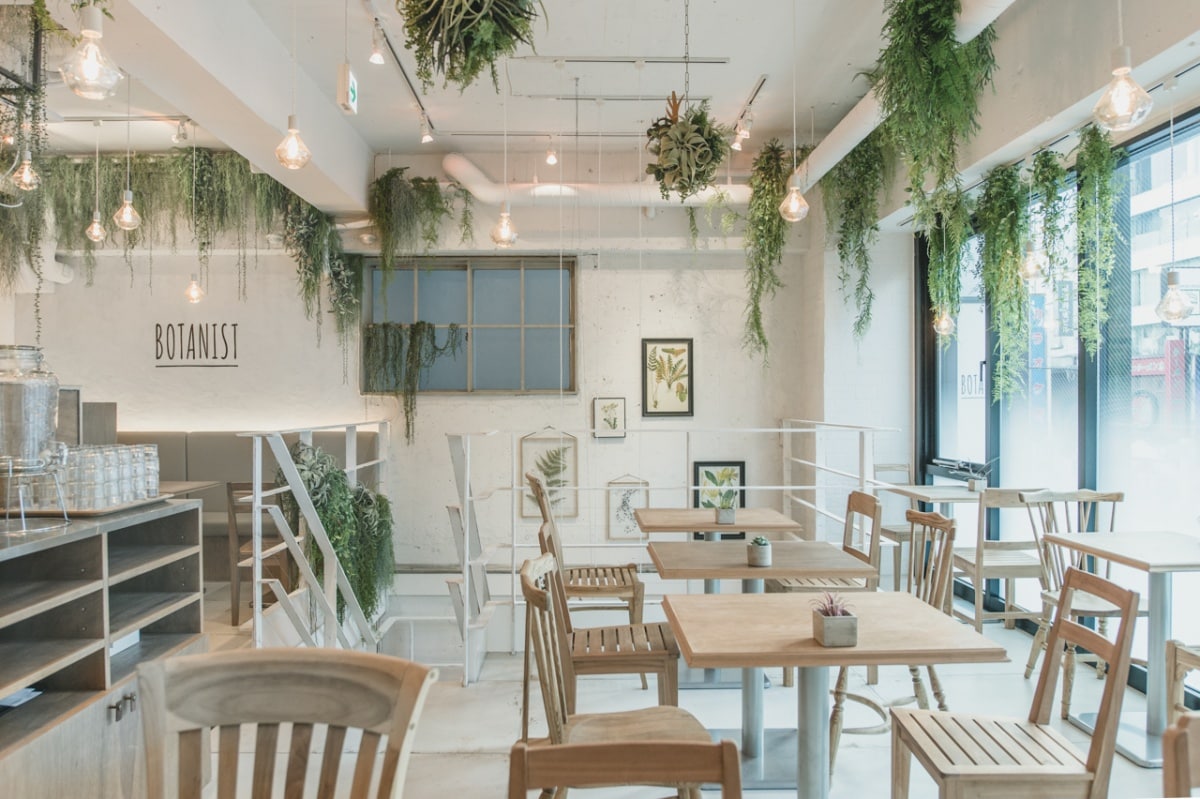
At lunch, stop in at Botanist Cafe. This beauty brand resembles an organic apothecary, and its first floor is filled with bottles, herbs, and trailing plants. Upstairs, a small cafe serves up healthy food, including many vegan and vegetarian options, including a line of rejuvenating smoothies.
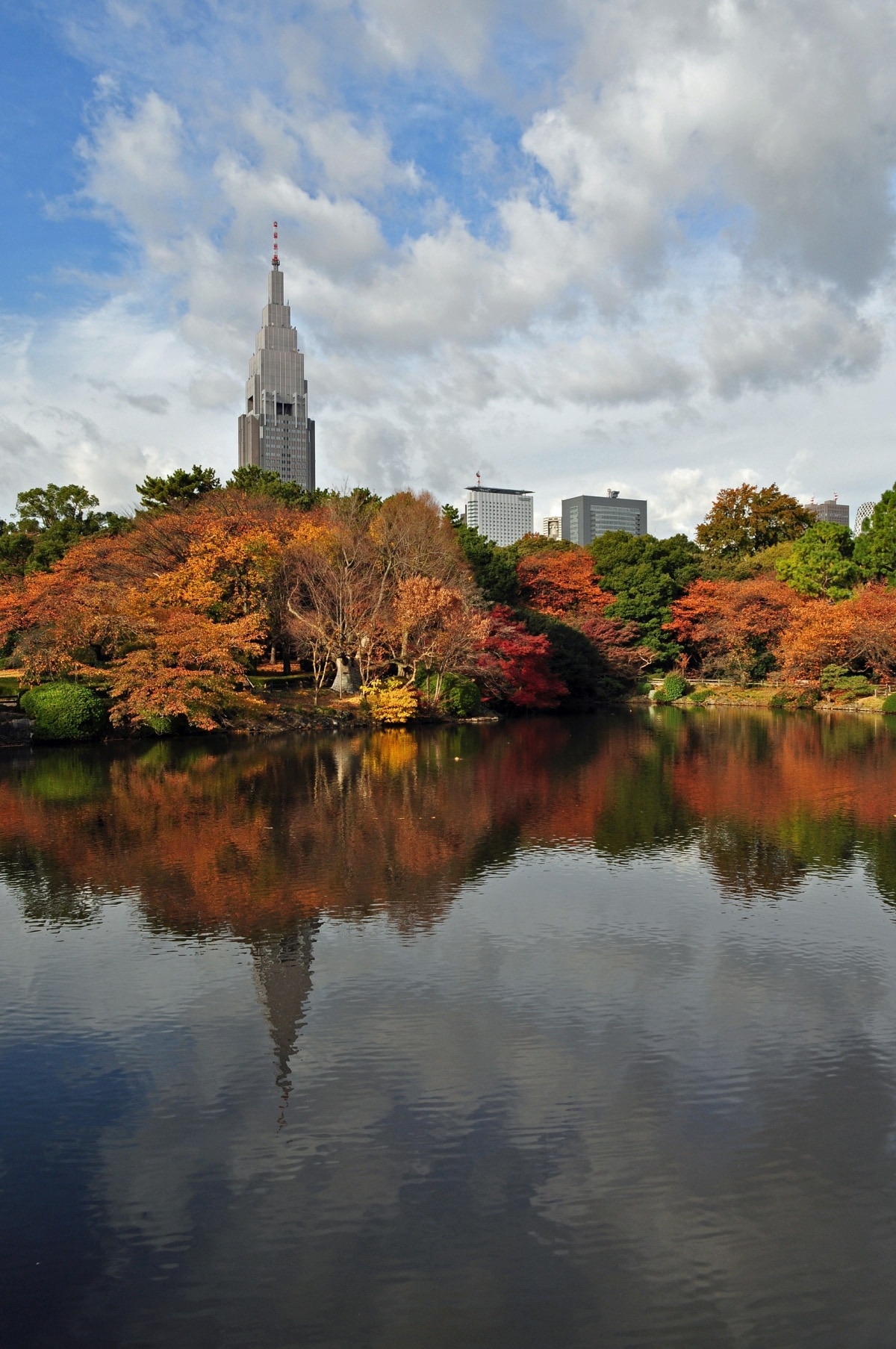
In the afternoon, head to Shinjuku Gyoen. This national garden spans 3.5 kilometers and used to be the residence of Lord Naito. It’s easy to spend a whole afternoon in this sprawling garden, with its expansive greens, thousands of trees, and network of ponds and rest houses. Entering the park is like taking a deep green breath in the midst of busy Shinjuku, and it’s the perfect place to lie in the grass with a picnic or just a blanket. The crown jewel is the Japanese Garden, with its gnarled trees, graceful curving bridges, and plenty of wildlife making their homes here.
Stop for a break at the Rakuu-tei, a small tea house serving matcha and Japanese tea snacks. The sweet morsel, accompanied by the smooth matcha, will fortify you for the rest of the afternoon.
Photo courtesy of Shinjuku Gyoen National Garden Management Office.
Back at the hotel, the wide city views from the rooftop terrace stretch from the skyscrapers of Shinjuku to the iconic Mount Fuji on the southwest horizon. It’s the perfect place to reflect and put your experiences into perspective.
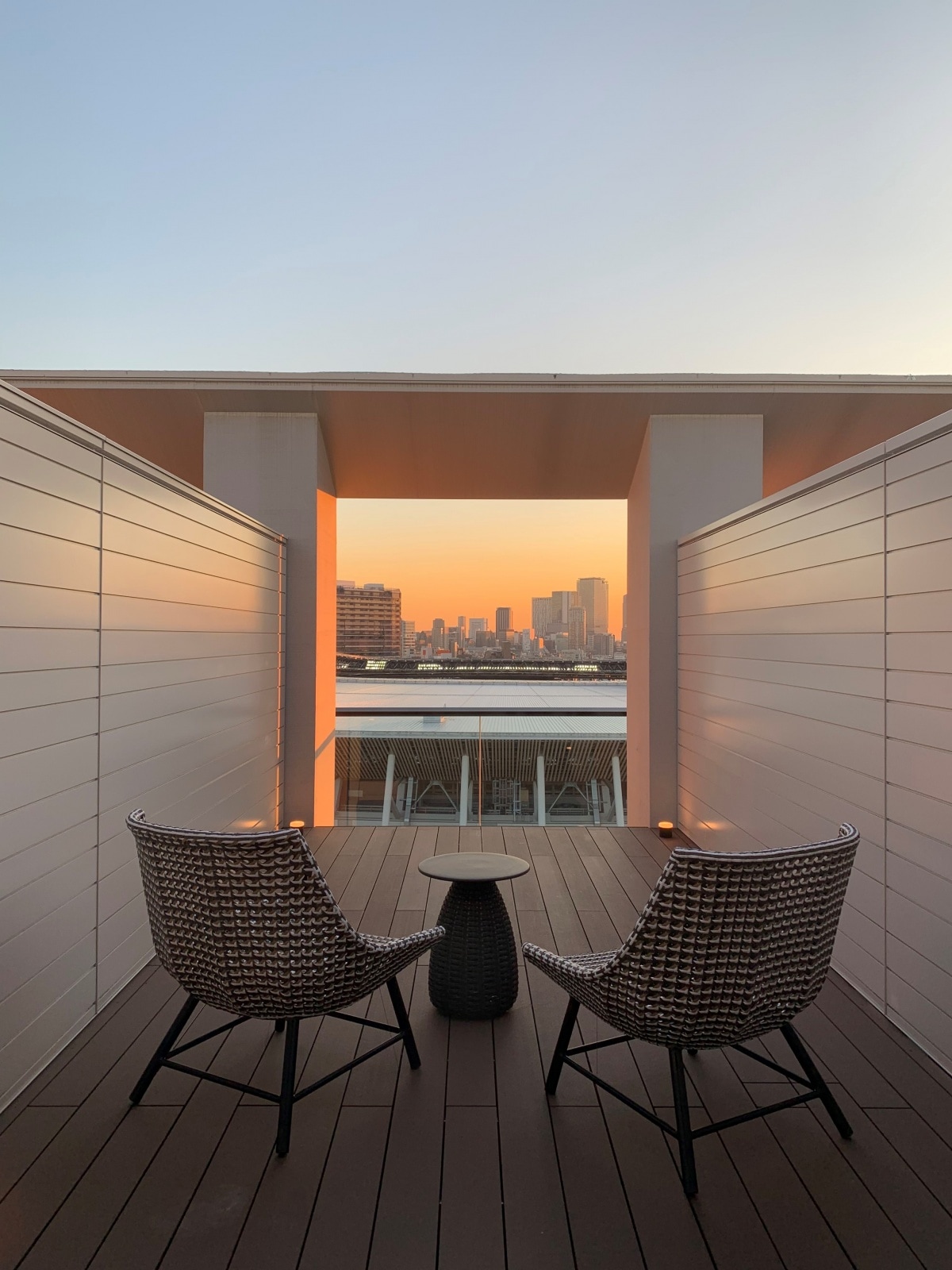
If you want to make the most of your stay in Tokyo, the Mitsui Garden Hotel Jingu-Gaien Tokyo Premier offers tranquility in the heart of the city.


